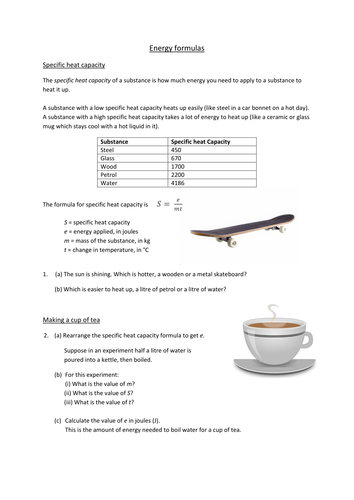














(Note: Some of the embedded equations do not display well on the TES preview but they all display perfectly on the downloadable PDFs)
Each project is linked to real life situations, and also includes lots of practice at other KS4 / National 5 Skills: standard form, algebra using brackets, volume formulas, rounding, units, surds.
Something went wrong, please try again later.
I am sorry to say there was a problem with printing the Braking Distance answer sheet.In the introduction to question 1 on braking distance it says the car is travelling at 70mph. This speed is used for qu1 (a) and (b), but part (c) changes the speed to 72mph. Is this intentional or should it be kept at 70mph? I don't suppose it matters as long as the working and final answer is correct for the speed chosen.<br /> The sheet on energy formulas has some omissions. The table relevant to qu 1 does not include any units for specific heat capacity. I feel that qu1 (b) should refer to the mass of the liquids, not their volumes . Qu 2 (b)(i) I am not sure how many students will be able to convert directly from 0.5 litres (I don't think the word 'half' should be used here.) of water to the correct mass.
Report this resourceto let us know if it violates our terms and conditions.
Our customer service team will review your report and will be in touch.
